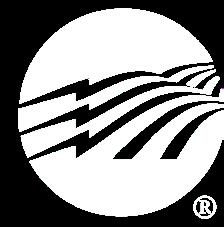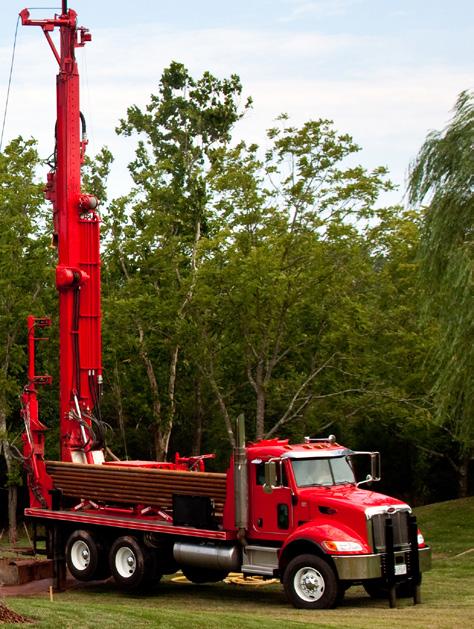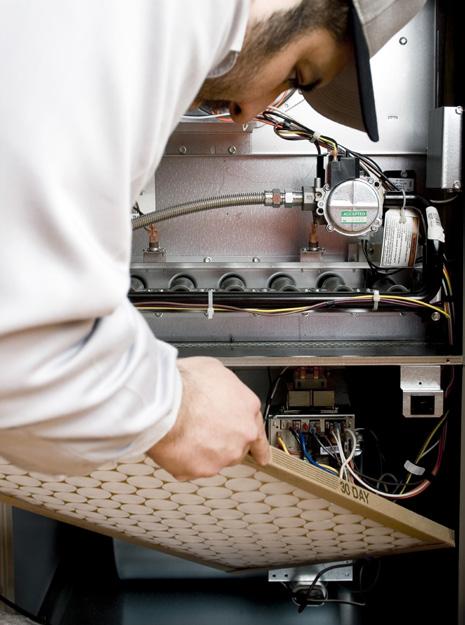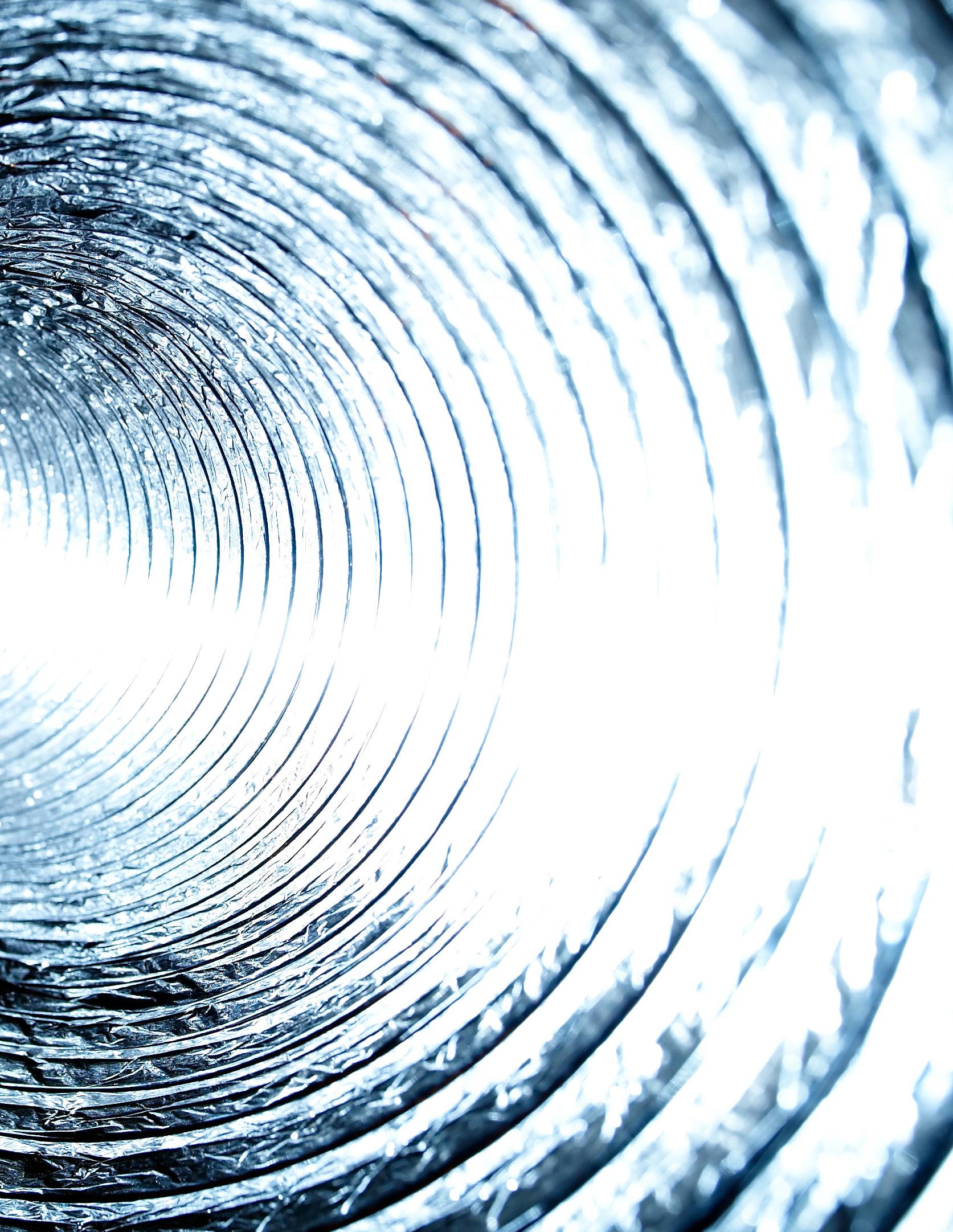GEOTHERMAL HEATING AND COOLING.


EFFICIENCY.

With the constant rise and fall of gas prices, the geothermal system is an energy-efficient and economical heating and cooling system alternative. A geothermal system, or ground source heat pump, uses the relatively constant underground temperature to extract or release heat. It’s the most efficient, inexpensive way to heat and cool your home because, just a few feet underground, is a free, clean and endlessly renewable source of heat. The earth works like a solar battery, absorbing nearly half of the sun’s energy. The soil underground stays a relatively constant 50+º F year round. That means it can provide a relatively constant, efficient source of heating and cooling. In winter, a geothermal system extracts the stored
EFFICIENCY STANDARDS.
warmth from the earth through a liquid that is constantly circulated via a loop of buried pipes. The heat is distributed throughout the home through the duct system. In the summer, heat is taken from the home and released through the same loop of pipes into the soil. Some geothermal systems also can preheat the water that goes into your water heater and cut the energy normally required to heat your water by as much as 50 percent. For all of this heating and cooling, the only cost to you is the electricity to operate the system. That’s why a geothermal system is 300 to 400 percent energy efficient, returning $3 to $4 of heating, cooling and water heating for every $1 of electricity it uses.
The energy efficiency ratings for a geothermal system are typically indicated by EER and COP. EER stands for Energy Efficiency Rating and is the cooling efficiency rating. COP is the Coefficient of Performance and is the heating efficiency rating. As of this print date, the minimum efficiency standards for an Energy Star qualified closed loop geothermal system are shown below.

Effective Date 1/1/12 Loop Type Closed Loop EER Minimum 17.1 COP Minimum 3.6 Note: Ratings reflect efficiency requirements for water to air systems only.
DURABILITY.
Because the quiet geothermal unit goes inside your home and is away from weather extremes, dirt and corrosion, the average life span of the major components is more than 20 years. The loop, made of high-strength thermal plastic, is filled with an environmentally safe solution. The liquid never comes in direct contact with the earth and the loop is virtually maintenance-free, with a life-expectancy of more than 50 years. And with new trenching equipment, the loops can be buried even in rough terrain with minimal disruption to landscaping. Many manufacturers offer system and loop warranties to guarantee quality and performance.

BENEFITS.
Savings. Where a natural gas or propane furnace may be 60%-95% efficient, a geothermal system is 300% efficient! This high efficiency equals energy savings of up to 70% for heating and 50% for cooling and hot water.
Free hot water. Unlike any other heating and cooling system, a geothermal system can provide free hot water. A device called a “desuperheater” transfers excess heat from the pump to the water heater. In the summer, hot water is provided free; in the winter, water heating costs are cut roughly in half.
Year-round comfort. A geothermal system heats and cools the home in an even fashion. It is clean, safe and quiet. It is all-electric so there are no flames, flues or fumes.
Versatility. Any home with a central duct system is a candidate for a geothermal system. There are a variety of ways to install an earth loop, even on small lots.
Low maintenance. The piping is underground or underwater, so there is little maintenance required. Occasional cleaning of the heat exchanger coils and changing the air filters are about all that’s necessary to keep the system in good running order.
Cost. Although the initial cost of geothermal is often more expensive than other heating and cooling options, the additional costs are typically returned to you in 5 to 10 years.
Rebates and incentives. Geothermal’s use of the earth and the constant underground temperature enables it to be considered a renewable energy. Because of this, many rebates and incentives are available for new and replacement geothermal systems.


LINE.
incentives
• Your
•
•
• Tax credits Please Note: Incentives are subject to change without notice. TAX CREDIT 30% Residential Energy Geothermal systems placed in service by December 31, 2032
THE BOTTOM
With a large upfront investment, geothermal heating and cooling often seems out of reach. However, through local, state and federal incentives, it may be more affordable than originally thought. Before discounting geothermal for your home, check into
available from: • Butler Rural Electric Cooperative
county government
State of Ohio
Heating and cooling contractors in your area
LOOP DESIGN.
A geothermal loop is made of high-strength thermal plastic and is filled with an environmentally safe solution. The liquid never comes in direct contact with the earth. The loop is virtually maintenance-free with a life-expectancy of more than 50 years. And with new trenching equipment, the loops can be buried even in rough terrain with minimal disruption to landscaping. Several loop types are available.
LOOP TYPES.
Horizontal. Trenches are dug using a backhoe or chain trencher. Pipes are inserted and the trenches are backfilled. Trenches normally range from 100 to 125 feet per ton of geothermal capacity and require one-quarter to threequarters of an acre for a standard sized system.


Horizontal Bore. This loop requires special equipment to bore holes horizontally under the surface. A small-diameter tunnel is created by displacing soil with pressurized water. This technique allows the loop to be placed underneath homes, basements and wooded lots. This type of loop is most often used in a retrofit situation to minimize disruption to the landscape.


Vertical. Vertical loops are used where space is limited or where soil conditions are not conducive to horizontal loops. Multiple holes are bored about 10 feet apart. A double pipe connected with a U-bend is inserted into each hole. The vertical pipes are then connected to a header system horizontally a few feet below the surface. Hole depth will depend upon the soil conditions and the size of the systems. Most holes are generally 150 feet deep per ton of geothermal capacity.
Pond. A series of closed loops are coiled and put into the bottom of a pond. The average home would require a half acre, 8-foot deep pond for this type of loop installation. To reduce costs, the pond should be ideally less than 200 feet from the home. Trenching is limited to only the supply and return piping from the pond to the home.
Open. An open loop design for geothermal can be economical given the right conditions. An open loop can use groundwater from a well as a direct energy source, provided the water quality is adequate and all ground water discharge regulations are met. Open loop designs do not qualify for the cooperative’s geothermal program and incentives.
Is a geothermal system noisy? No. A two-speed geothermal heat pump system is so quiet inside that homeowners typically do not know it’s operating.
Will I notice a difference in comfort with a geothermal heat pump? Today’s heat pump systems are more efficient than ever and, with a properly sized system installed by a qualified heating and air-conditioning contractor, that means constant comfort year-round. While the temperature of the air coming from your registers might be slightly lower than older gas or oil furnaces, it is high enough to keep your home very comfortable, and room temperatures are more consistent.
How do the costs compare to other heating systems? Although a geothermal unit will cost more initially due to the installation of the ground loop, its low operating costs can save you money in the long run. Ground loop installation costs may vary with soil conditions. A contractor can run the cost estimates so you can make the decision that is best for you.
Do I need a backup heat supply? Where temperatures drop below freezing, a backup heat supply is generally installed. In most cases, this is electric resistance heat built into the geothermal unit.

How do I know what size system I need? A qualified geothermal contractor will measure your house, as well as calculate your heating and cooling requirements to determine the size of the system that will be most efficient. They will also look at your property and discuss the best loop system for you.
Will a ground loop on the geothermal system affect my lawn or landscape? No. Loops have no adverse effect on grass, flowers, trees or shrubs. You will, of course, have temporarily bare areas where any loops are dug but this can be restored with grass seed or sod. And depending on the type of loop used, disruption can be kept to a minimum.
Doesn’t a ground loop require a lot of space to install? Not necessarily. There are several loop types available, based upon the space available and your soil conditions.
I haven’t heard much about geothermal systems. Is this a new technology? No, geothermal systems have been around for decades, and with all the recent improvements, they’re even more energy efficient than before. They operate on the same principle as your refrigerator, removing heat by using a refrigerant in the summer, and reversing the process in the winter.
FREQUENTLY ASKED QUESTIONS.
GEOTHERMAL FASCINATING FACTS FROM GEOEXCHANGE.ORG.
• The U.S. Environmental Protection Agency has identified geothermal heat pumps as a technology that significantly reduces greenhouse gas and other air emissions associated with heating, cooling and water heating residential buildings, while saving consumers money, compared to conventional technologies. 1 For every 100,000 units of typically sized residential geothermal heat pumps installed, more than 37.5 trillion BTUs (British thermal units) of energy used for space conditioning and water heating can be saved, corresponding to an emissions reduction of about 2.18 million metric tons of carbon equivalents, and cost savings to consumers of about $750 million over the 20-year-life of the equipment.
• Geothermal heat pump systems, also known as geoexchange, are the most energyefficient, environmentally clean, and cost-effective space conditioning systems available, according to the EPA (Environmental Protection Agency). 1
• Geothermal heat pumps strengthen U.S. energy security. Every 100,000 homes with geothermal heat pump systems reduce foreign oil consumption by 2.15 million barrels annually and reduce electricity consumption by 799 million kilowatt hours annually.
• Geothermal heat pumps are environmental. They generate no on site emissions and have the lowest emissions among all heating and cooling technologies. 1
• EPA found that, even on a source fuel basis -- accounting for ALL losses in the fuel cycle including electricity generation at power plants -- geothermal systems are much more efficient than competing fuel technologies. They are an average of 48% more efficient than the best gas furnaces on a source fuel basis, and over 75% more efficient than oil furnaces. In fact, today’s best geothermal systems outperform the best gas technology, gas heat pumps, by an average of 36% in heating mode and 43% in cooling mode!
• The U.S. General Accounting Office estimates that if geothermal systems were installed nationwide, they could save several billion dollars annually in energy costs and substantially reduce pollution. 2
• Surveys by utilities indicate a higher level of consumer satisfaction for geothermal systems than for conventional systems. Polls consistently show that more than 95% of all geothermal customers would recommend geothermal to a family member or friend.
• Today, there are now more than 750,000 geothermal installations in the United States. These 750,000 installations have also resulted in the following energy consumption reductions:
• Annual savings of nearly 6 billion kWhs (kilowatt-hours)
• Annual savings of 30 trillion BTUs of fossil fuels
• Reduced electricity demand of nearly 2 million kWs (kilowatts)
• The monumental impact of the current use of geothermal heat pump technology is equivalent to:

• Taking 971,000 cars off the road
• Planting 289 million trees
• Reducing U.S. reliance on imported fuels by 16.1 million barrels of crude oil per year
1Environmental Protection Agency, Space Conditioning: The Next Frontier. Office of Air and Radiation, 430-R-93-004.
2General Accounting Office, Geothermal Energy, Outlook Limited for Some Users but Promising for Geothermal.

COOPERATIVE PROGRAM.
PROGRAM INCENTIVES.*
• The cooperative offers a $1,200 rebate for new geothermal installations and a $600 rebate for geothermal system replacements.
• Members with geothermal receive a geothermal discount of $.02 credit per kilowatthour used between 1,001 and 2,501 kilowatt-hours from September through May.
• Low-interest loans are available to qualifying members. The loan covers 100% of the cost of the geothermal project up to $25,000. More information on loans can be found on page 13. New home construction does not qualify.
PROGRAM QUALIFICATIONS.
• The geothermal system must be an all electric system and be the only source of heat in the home. Any other types of heat must be removed. This does not include fireplaces or wood stoves.
• The geothermal system must be installed by a contractor on our list of geothermal contractors. All contractors must have active certification with the International Ground Source Heat Pump Association (IGSHPA). An updated list of contractors is available on our website at www.butlerrural.coop or by calling the cooperative’s office.
• The loop must be closed and only plastic pipe (such as polyethylene or polybutylene) may be used for the loop installation. Direct expansion and open well systems do not qualify.
• The geothermal system installed must have a minimum Energy Efficiency Ratio (EER) of 17.1 and a minimum Coefficient of Performance (COP) of 3.6. This is based on the standards put in place by the government’s Energy Star program.
• The member must sign an agreement that explains the requirements on the geothermal program. The contractor will also have information to fill out showing specifications for the installation.
• Members with distributed generation are not eligible for this program. In addition, members with lighting, seasonal, net metering, or net billing accounts are not eligible for this program.
*Incentives can change and are not guaranteed. Email or call the office to confirm current program incentives prior to installation.

GEOTHERMAL CONTRACTORS.
In order to qualify for the cooperative’s geothermal rebate, a contractor on the cooperative’s contractor list must be used for installation. All contractors are International Ground Source Heat Pump Association (IGSHPA) certified and have agreed to install systems according to cooperative standards. When seeking bids for a new geothermal system, it is recommended to get at least three different estimates to get multiple opinions. It is important to ask the right questions to get the best information possible.
QUESTIONS TO ASK CONTRACTORS.
1. What is the total cost to have geothermal installed?
2. What can I expect my annual heating and cooling cost to be with geothermal? Can you calculate an estimated heating and cooling cost for a home of my size?
3. What size heating and cooling system do I need? Did you perform a Manual J calculation to determine the size of my system?
4. At what outdoor temperature will my electric backup heat (also known as auxiliary or emergency heat) come on? The cooperative recommends between 0-15°F because it is more expensive to run when the backup heat comes on. This question is important because kilowatt-hour usage will significantly increase and savings ($) will decrease when the backup is used.
5. How long have you been installing geothermal systems and how many geothermal systems have you installed in the past five years? What percentage are new construction homes versus existing homes?
6. Do you have any unresolved complaints or issues with the Better Business Bureau (BBB)? You can check with the BBB by calling 513.421.3015 or by visiting their website at http://cincinnati. bbb.org.
7. Are your installers certified by the geothermal equipment manufacturer? International Ground Source Heat Pump (IGSHPA) certified?
8. What are all manufacturer warranties available? What is your warranty as a contractor?

9. How will my yard be left when the job is complete?
10. How often do I need to have my geothermal system serviced? The cooperative recommends a yearly service to check loop pressure, clean the coils, etc.
11. How often do I change or clean my air filter? Will you show me how to clean the air filter? What happens if I do not clean my air filter? The cooperative recommends changing or cleaning monthly.
12. Do you have any references I can contact that have geothermal?
13. When will my geothermal installation be complete? Will I be running on backup heat during the installation?
14. Do you provide an option for vertical or horizontal loop installation? What are the advantages and costs of both?
FINANCING AVAILABLE.
To apply. To apply for a loan, the member, who must also be the owner of the property, must complete a loan application. If appropriate, a coapplicant may be required. There is a $15 application fee.
Energy Audit. An energy audit of the home may be required prior to approval of the loan. Energy Audits are completed by the cooperative.
Interest rate. Interest is a low, fixed rate. Please call or email the office for information on current rates and loan fund availability.
Duration. The minimum term on any loan is 12 months. The maximum term is dependent upon the total loan amount. See chart below for details.
Processing. If pre-approved, we will need: last year’s W-2 or tax return to verify income, a copy of the recorded deed to check for liens and to file a mortgage (if the loan is greater than $2,000) and a copy of the bid or estimate.
Closing costs. Closing costs will be required at the time the loan papers are signed. Closing costs are $96-$172. Additional fees may apply.
Proof of insurance. Members with loans need to be insured so that in the event of a fire or other damage, the cooperative will be reimbursed for the equipment if the loan is outstanding. For the duration of the loan, members must show and maintain proof of insurance.
Payments. All loans follow a normal amortization schedule. The loan payment is billed to the member on the monthly electric bill.
Pre-payment penalty. There is no pre-payment penalty. The loan can be paid off in full at any point in time.
Interest. Please consult your tax advisor as to whether the interest on the loan is tax deductible.
Note: New homes do not qualify for the cooperative’s loan program. Amount

$ 500 to $2,499 18 months maximum $ 2,500 to $4,999 48 months maximum $ 5,000 to $9,999 60 months maximum
$10,000 to $25,000 120 months maximum
Note: Minimum duration of 12 months for all loans
The cooperative offers low-interest financing to qualifying members who install or replace a geothermal system.
Duration
Financing terms available.
Terms and Conditions are subject to change without notice.
3888 Stillwell Beckett Road Oxford, Ohio 45056 513.867.4400 • 800.255.2732 butler@butlerrural.coop www.ButlerRural.coop ver 1/23

















